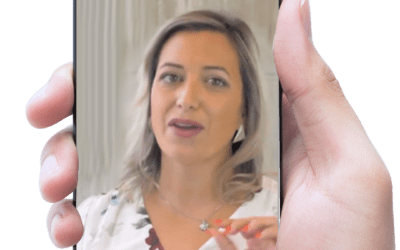These days, most of our clients know that SEO stands for search engine optimization and that it has something to do with their websites, but deep understanding is still rare. There’s a lot to know about SEO. Even so, a bit of knowledge can go a long way. In this article, we’ll cover the basics of SEO and break it down into its four parts, like a quattro stagioni pizza (yum!).
What is SEO
You want your website and any other digital materials to be easy to find and index because this will help you get better, organic traffic, so-called because searchers find you naturally by typing their keywords into a search engine. Search engine optimization is key to this process and includes tactics such as identifying and including strong keywords, writing relevant metadata, and optimizing content.
There are four aspects of search engine optimization, all of which demand keen attention for maximum results.
The four aspects of SEO
Technical SEO
Technical SEO has to do with how easy it is for search engines to crawl, interpret, and index. This kind of optimization deals with your website infrastructure, not the content, which is why it’s called technical, and though it has always been important it may be getting more so. Starting in May of 2021, Google will be considering page experience ranking signals, or core vitals, as part of their search rankings.
Ranking what? Core who? This might sound daunting but it’s not. With platforms like WordPress, it can be done pretty quickly but even more importantly, this is a task for your developer. If you’re ready to get your technical SEO in ship-shape, ask the person who manages your site to audit and improve this list:
- Crawl – Can a search engine explore your site?
- Index – Is it clear which pages the search engine should index and return?
- Mobile – Does your site adapt for mobile users?
- Speed – Fast load times are a crucial factor in keeping your visitors happy, and the faster the better. Aim for a page load speed under 3 seconds.
- Tech – Are you using search-engine-friendly tech or a content management system (CMS) for your website? (If you’re on a well-known platform like WordPress, SquareSpace, or Shopify, you’re good to go!)
- Hierarchy – How is your content structured? Is it in an intelligible hierarchy? Simply put, your content should follow a well-organized structure: images, headlines, paragraphs with bullets or numbered lists.
Before you assign your developer the task of updating your site, assess whether a new site would better meet your needs. If your site is more than five years old, it’s likely worth the investment.
On-site SEO
This kind of SEO helps both search engines and users get the most out of your page by optimizing the elements on your site like the HTML and content. What you want is for search engines to be able to interpret your page content, and for (human) users to quickly and clearly understand what a page is about. Further, both have to be able to determine whether it addresses their search query. In other words, good on-site SEO helps search engines understand what a human would see (and what value they would get) if they visited the page, so that search engines can reliably serve up what human visitors would consider high-quality content about a particular search query (keyword).
Here’s a checklist to get you started pleasing the robots:
- Keywords – Understand the words your target audience will use to find your product or service and make sure they are included on your site.
- Descriptive URLs – Have you ever seen a URL like this: www.yoursite.com/7Hmi94Cd These links may “work” in the sense that they connect you to a page, but they don’t “work” to help your users find what they’re looking for. www.yoursite.com/meet-our-team does a much better job. Ensure each URL is simple and descriptive.
- Page titles – Similarly, make your page titles clear and descriptive and use keywords naturally within them.
- Meta descriptions – A meta description is a short (~140 characters) HTML tag that describes what content is on the page. Craft meta descriptions like ad copy to drive clicks.
- Content optimization – In the bad old days, using keywords was more of a quantity than quality game. Now, keyword use is important but should be used sensibly and with variations in your page copy.
On-site SEO is less about keyword repetition or placement and more about understanding who your users are and what they’re looking for. Think of your keywords as topics and create content to match your users’ needs. For your human users, your pages should be:
- In-depth – Now more than ever, your content must be thorough. “Thin” content was one of Google Panda’s specific targets and will prevent your pages from a good ranking.
- Good user experience (UX) – Is the content readable? Is it organized on your site in such a way that it’s easily navigable? Is it generally clean, or littered with ads and affiliate links? Your site should be a joy to use and navigate. Make sure you use a clear hierarchy of information, have consistent page layouts, demand as little as possible of your visitors to find the information they seek.
- Strong calls to action – Make it easy for your users to take the next step.
- Unique – Content duplicated from elsewhere on your site (or elsewhere on the Internet) may impact a site’s ability to rank on search engine results pages. If you must duplicate, make sure you address where it came from.
- Authoritative and trustworthy – Does your content stand on its own as a reliable resource for information on a particular topic?
- Aligned with user search intent – Your content should be what the user expects when they click a link to your site. Deliver on your audience’s expectations.
Content
The words, images, and video on your site carry a lot of weight. Simply put, they signal to search engines what your business does so that it can include you in the list it creates when someone is searching. Drill down into your actual content and audit:
- Keywords and phrases – Are your keywords and phrases (and variations on them) appropriate? How would my audience search for this content? How would they frame their question(s)? How can I best answer their questions using the same terminology? Audience research is key to understanding how your audience searches for content.
- Multiple media types – Does your site have quality content in a variety of formats?
- Interactive elements – Make your pages interactive. For example, if you create a YouTube video, you could also include an audio podcast and transcript of the video, images, and a blog post that complement the video. Test to make sure all chat windows, forms, videos, and sound are working properly and not distracting from the main content.
- Internal and external links – Test to make sure all links work.
Off-site SEO
Your search ranking can be affected not only by the number of inbound links (links from other external sites) but also their quality. The more links coming to you, the more credible you look to search engines because they are essentially “vouching” that your site is a good resource. Inbound links from heavyweights like national magazines or newspapers are SEO gold. So how do you get a good quantity of quality inbound links? Outreach.
Improve your off-site SEO by building relationships and sharing or creating content with:
- Media outlets – Newspapers and trade magazines carry a lot of weight so partnerships or exposure in these venues is very valuable.
- Social media influencers – Product or service mentions with social media influencers can have a broad reach.
- Bloggers – Bloggers have dedicated audiences so strategic partnerships can yield quality leads.
- Other websites – The more websites that link to you, the more credibility you’ll have.
- Podcast hosts – Podcasts are famous for the loyalty of their audiences and the form itself allows for creative advertising.
- YouTube channels – YouTube is still one of the most-visited platforms in the world.
Search engine optimization is inextricably linked to (human) user-friendliness. Improve them both and you’re sure to snag a top search result and loyal repeat visitors.


